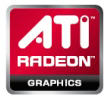Radeon HD 5970 - ATI's killer graphics card

Thought that ATI's Radeon HD 5870 is a killer graphics card? Well you ain't seen nothing yet - until you've seen the Radeon HD 5970.

The spec of the HD 5970 is very impressive indeed:
The HD 5970 forms part of ATI's "sweet spot" strategy:
What makes the HD 5970 so special - the dual DirectX 11 teraFLOPs engines on a single PCB:
Few interesting tidbits of info on the following slide.
- Core clock on the HD 5970 is slightly less than that of the HD 5870 (725MHz vs 850MHz)
- This keeps the max power usage below 300W so as not to need a PSU of it's own
- Notice the max resolution - Eyefinity baby!
Radeon HD 5970 ... topless! To overclock this card you're going to need a serious PSU as the card itself could be consuming 350W - 400W alone!
Notice how the vapor chamber heatsink is designed to support 400W ...
Do you need a card that's this powerful? Well, the truth is that most people don't. First, you need a heck of a PC to get the benefit from a card like this ... high-end CPU, lots of RAM, fast hard drives ... no point adding a card like this to a low-end PC. Also, you need big screens running at high resolutions to make it worthwhile. The great thing about adding this to a high-end PC is that it future-proofs your system for a good while, especially given the DirectX 11 support.
Biggest downsides are the power consumption and the price - expect this to retail for $599.